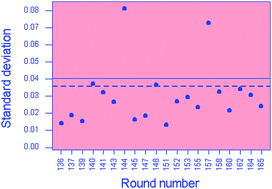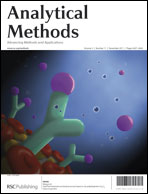A long-term look at homogeneity testing: prospects for a cheaper ‘quality control’ based test†
Abstract
Homogeneity testing of materials used in analytical proficiency tests is usually carried out by selecting at random a number of the distribution units (commonly 10) and analysing them in duplicate. The results are assessed by one-way analysis of variance. Because of the limited amount of information available in these data, this analysis provides an imprecise estimate of the analytical variance σ2an, an even more imprecise estimate of the sampling variance σ2sam, and a test of low statistical power of the hypothesis σ2sam = 0. When a succession of similar materials are prepared for successive rounds, under conditions where statistical control of the whole process is a reasonable assumption, the greatly increased number of degrees of freedom obtained by pooling the data allows both variance components to be well estimated, even when the sampling variance is small. A new approach to homogeneity testing is proposed, in which, after an initial phase of data collection and variance estimation, a control chart is set up and the experimental design is reduced to 10 singleton measurements. This gives a considerable reduction in expenditure, with little or no loss in statistical power.


 Please wait while we load your content...
Please wait while we load your content...